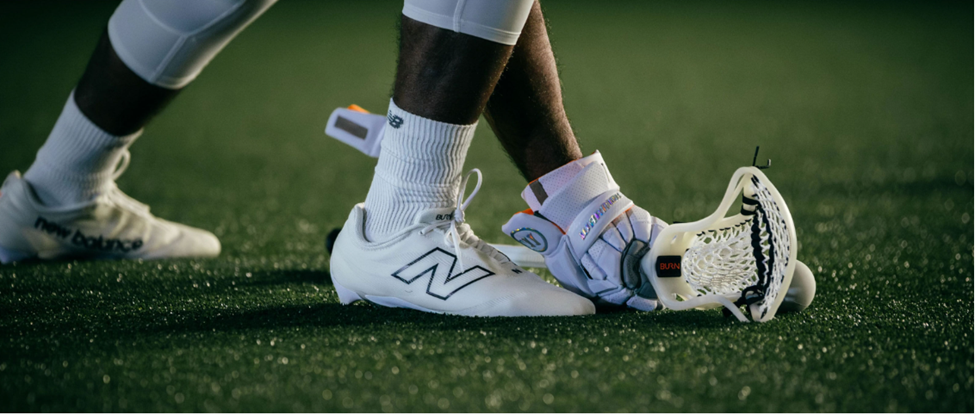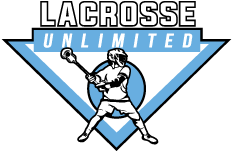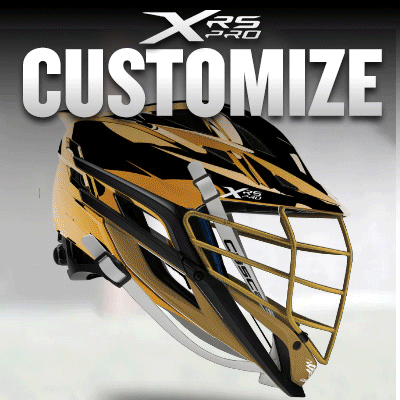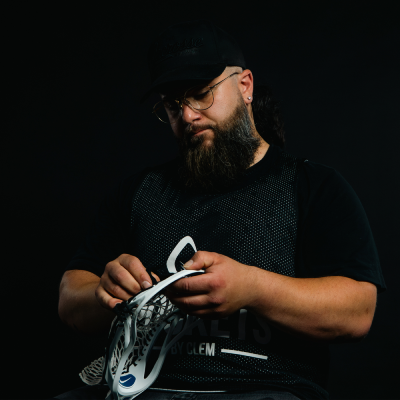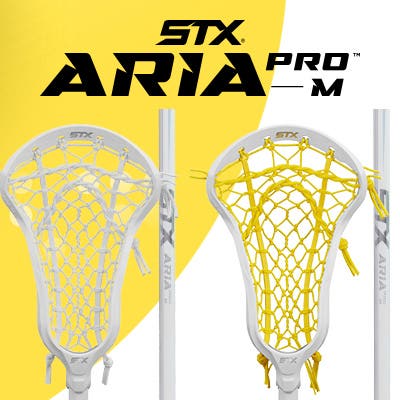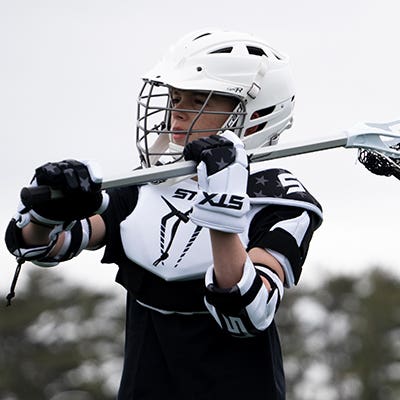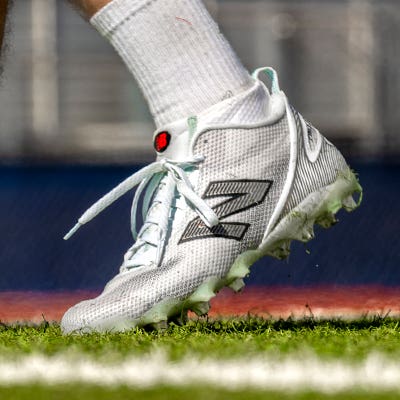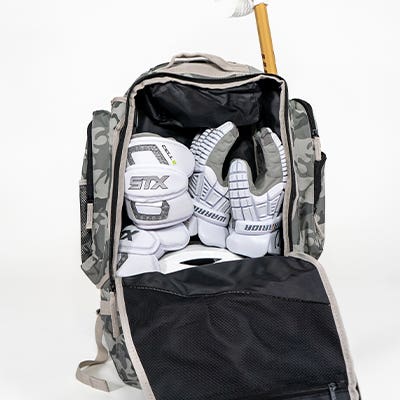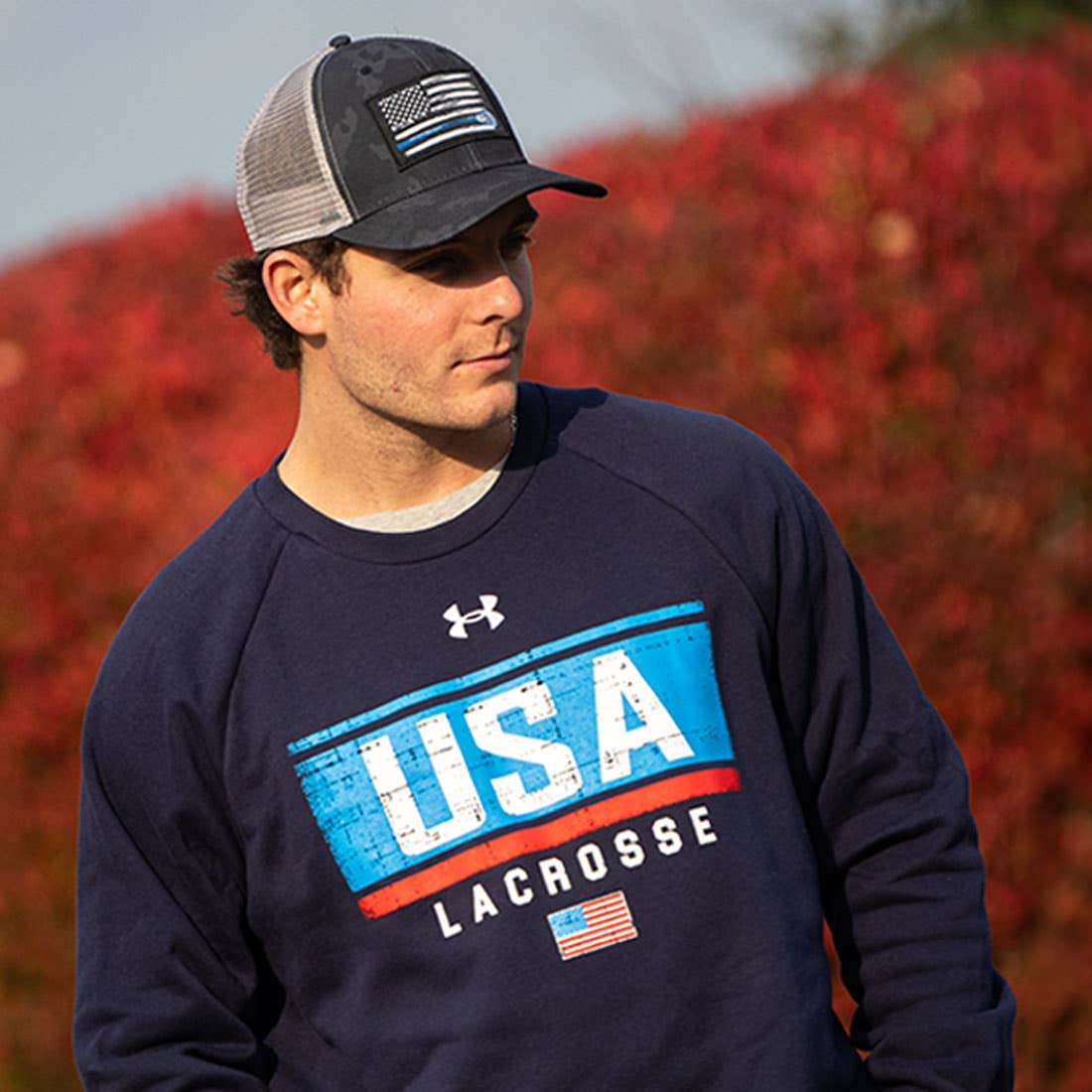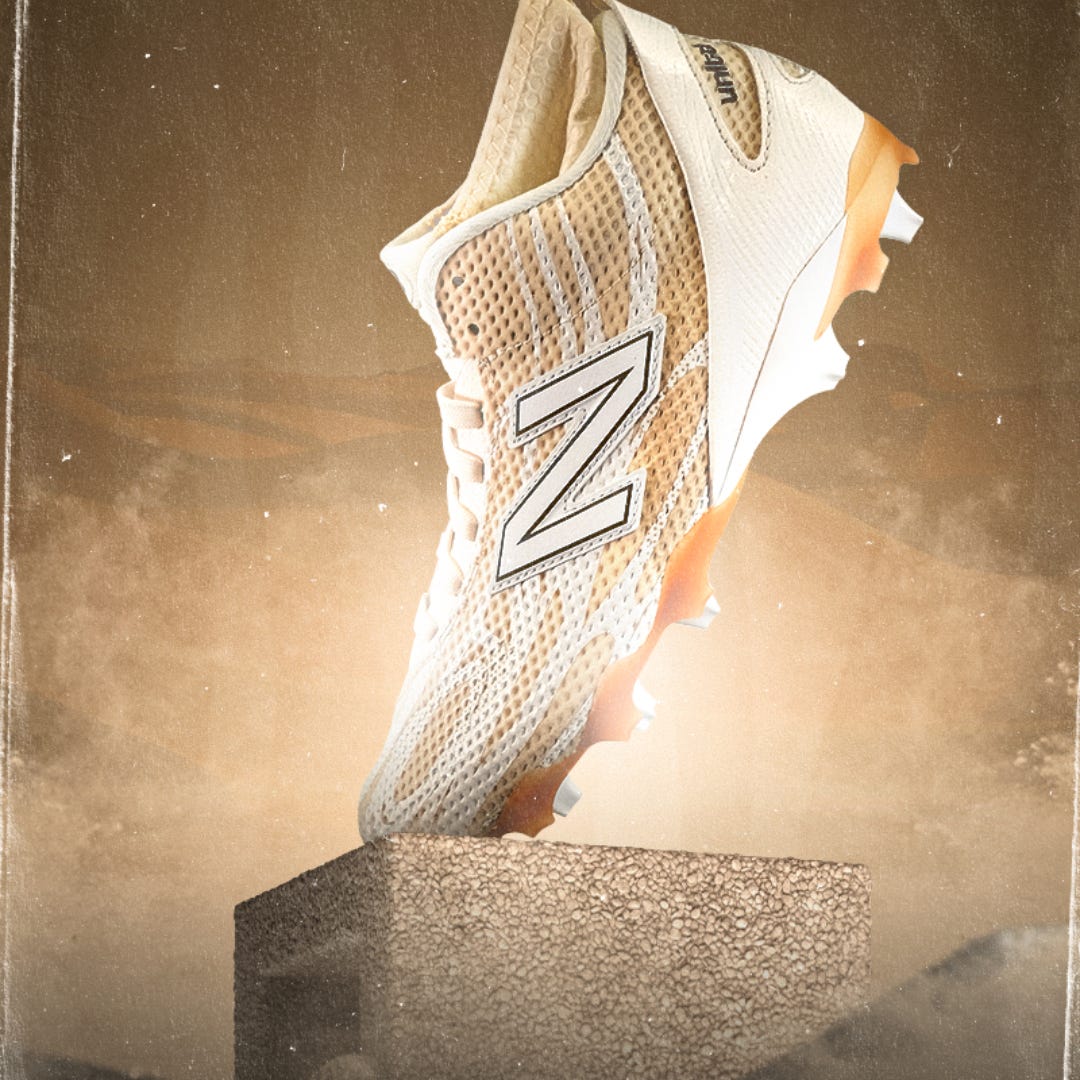
When stepping onto the lacrosse field, the right footwear can make all the difference in your performance. While some players opt for football cleats out of convenience, lacrosse cleats are specifically engineered for the sport’s fast-paced, multidirectional demands. From agility to comfort, let’s dive into why choosing lacrosse cleats over football cleats is the way to go for any player looking to take their game to the next level!
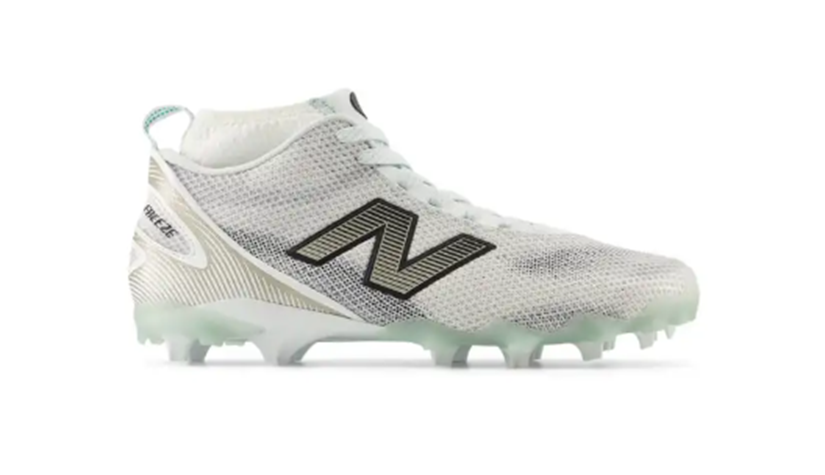

Dynamically Built for the Lacrosse Field
Lacrosse is a game of constant motion: sprinting, changing direction, and dodging; all at a full-on sprint. It isn’t called the fastest game on two feet for nothing! Slow feet don’t eat! Lacrosse cleats are designed to enhance speed and agility, allowing for quick lateral movements and explosive bursts. Unlike football cleats, which prioritize straight-line speed and brute-force traction, lacrosse cleats support the dynamic footwork required to dominate on the field.
Lacrosse is unique, and so are cleats. Every element is designed with the games demands in mind:
✅ Shorter studs for quick cuts and pivots
✅ Flexible plates for improved mobility
✅ Lightweight construction to keep players moving effortlessly
✅ 360-degree fit to support ankle stability without restricting movement
These design elements help maximize performance without the unnecessary bulk of football cleats, which are often built for power and impact rather than finesse.
The cleat pattern plays a significant role in performance, and each sport has different traction needs:
- Football cleats have longer, deeper studs to dig into grass for traction against high-impact plays. While great for linemen, this can slow down lacrosse players who need quick, agile movements.
- Soccer cleats have shorter, rounded studs designed for smooth footwork and ball handling but don’t offer the lateral grip needed for aggressive cutting in lacrosse.
- Lacrosse cleats strike a perfect balance, featuring shorter studs for grip without excess drag, allowing for quicker movements without compromising stability.
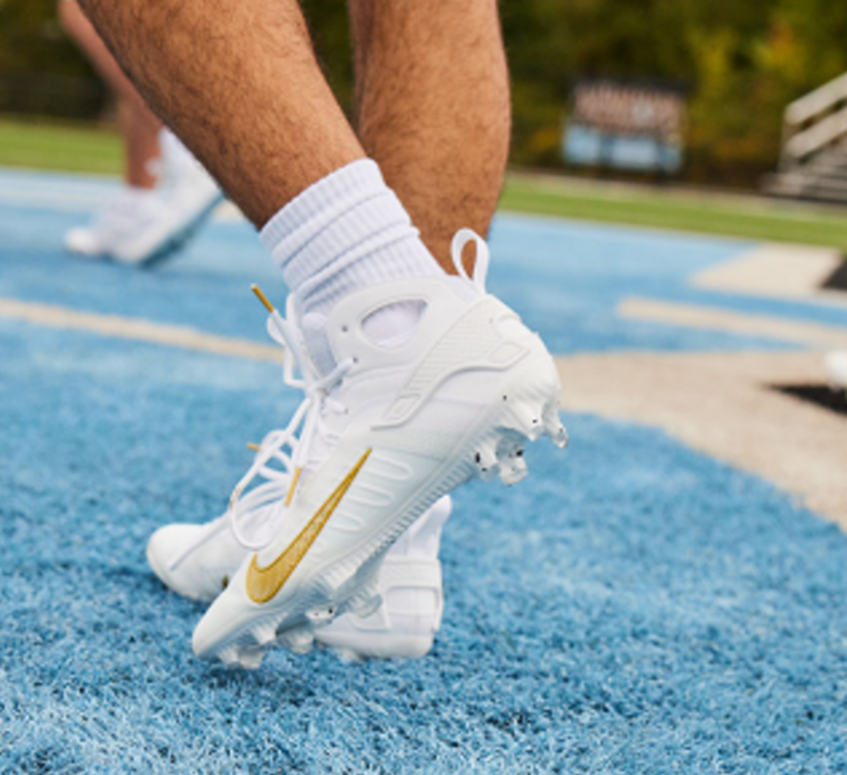

Football cleats feature reinforced toe boxes for impact protection—ideal for the gridiron, but overkill for lacrosse. Rather, lacrosse cleats focus on a molded toe cap that enhances durability while keeping weight to a minimum. This balance ensures that your cleats stay in top condition without adding extra bulk that could slow you down. Football cleats often have stiff plates designed to handle extreme pressure from blocking and tackling. Meanwhile, lacrosse cleats prioritize flexibility, allowing for natural foot movement and enhanced comfort. The result? The last minute of the game feels just as good as the first, keeping your footwork sharp when it matters most. Lacrosse games demand endurance, with constant sprinting, stopping, and changing direction. Footwear comfort is crucial:
- Football cleats are often stiff and bulky, built for short bursts of action rather than sustained movement.
- Soccer cleats are minimalist and lightweight, but they lack ankle support and cushioning for extended play on turf and grass.
- Lacrosse cleats are designed for comfort and flexibility, ensuring your feet feel fresh from the first whistle to the final minute.


Lacrosse games are long, and the last thing you want is uncomfortable cleats dragging you down. Lacrosse cleats are engineered with lightweight materials and enhanced cushioning to provide all-game comfort. While football cleats may work in a pinch, they aren’t built for the constant running and change of direction required in lacrosse. Each sport has different demands on the toe box and plate stiffness:
- Football cleats feature a reinforced toe box for impact protection, necessary for blocking and tackling but unnecessary for lacrosse.
- Soccer cleats have a thin, soft toe for ball control, making them less durable for the constant cutting and change of direction in lacrosse.
- Lacrosse cleats use a molded toe cap to provide extra durability without adding unnecessary weight.
Beyond performance, lacrosse cleats are built to look as sleek as they feel. Football cleats are often designed for power and protection, leading to bulkier designs. Soccer cleats focus on a low-profile, snug fit that may lack the support needed for the longevity of lacrosse games and tournaments. Lacrosse cleats blend speed, support, and style, featuring fast, futuristic aesthetics that complement the sport’s unique energy.
Let’s be real—lacrosse players take pride in their gear. Lacrosse cleats are crafted with a clean, modern aesthetic that matches the sport’s fast and futuristic feel. Football cleats, while functional, often carry a bulkier look that doesn’t align with the sleek style of lacrosse footwear. If you want to maximize your speed, agility, and comfort on the field, lacrosse cleats are the clear choice. Football cleats may offer durability and traction, but they aren’t designed for the precise footwork and mobility that lacrosse demands. Whether you're inbounding from X or pushing a late game fast break, the right cleats can make all the difference—so lace up with a pair built specifically for your game!
